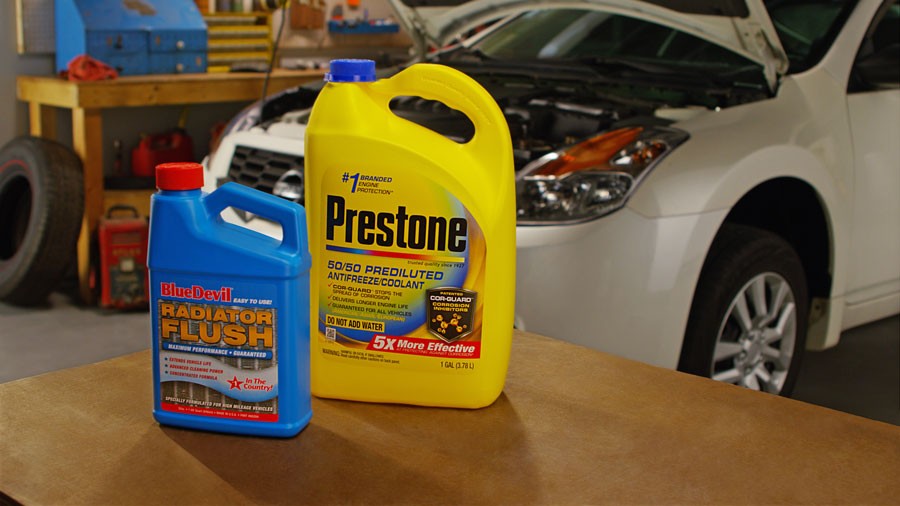Choosing the right antifreeze, or engine coolant, is crucial for the health and longevity of your car’s engine. Many drivers find themselves confused by the variety of options available. You might be asking yourself, “What Antifreeze Do I Need For My Car?” This guide will break down the types of antifreeze, how to choose the correct one, and why proper coolant maintenance is essential.
Understanding the Basics of Antifreeze (Engine Coolant)
Antifreeze, also known as engine coolant, is a vital fluid that performs several critical functions in your vehicle. Its primary job is to regulate engine temperature, preventing it from overheating in hot weather and freezing in cold conditions. But antifreeze does much more than just prevent freezing. It also contains additives that protect your engine from corrosion and lubricate the water pump. Using the correct type of antifreeze ensures these systems operate efficiently and reliably.
Historically, antifreeze has been categorized into two main types: IAT and OAT. Understanding the differences between these technologies is the first step in determining what antifreeze your car needs. For a deeper dive into the history and different types, you can explore resources like Understanding Different Types of Antifreeze provided by AutoZone.
IAT vs. OAT Antifreeze: Key Differences Explained
The automotive industry has evolved, and so has antifreeze technology. Let’s compare IAT and OAT antifreeze to understand their distinct characteristics:
IAT (Inorganic Acid Technology) Antifreeze
IAT antifreeze is the traditional “green” coolant that was the industry standard for over 70 years. This type of antifreeze uses inorganic additives like silicates and phosphates to prevent corrosion.
Pros of IAT Antifreeze:
- Universal Compatibility (within IAT): Generally, any green IAT antifreeze can be mixed with another green IAT antifreeze.
- Affordability: IAT antifreeze is typically less expensive than newer OAT formulas.
Cons of IAT Antifreeze:
- Shorter Lifespan: IAT antifreeze has a shorter lifespan compared to OAT, usually requiring replacement every two years or 24,000 miles.
- Less Effective with Aluminum: While it provides corrosion protection, IAT is less effective in modern engines that increasingly use aluminum components.
OAT (Organic Acid Technology) Antifreeze
Developed in response to the increasing use of aluminum in engines during the late 1980s, OAT antifreeze offers improved performance and longevity. OAT coolants use organic acids for corrosion protection, which provides longer-lasting protection, especially for aluminum parts.
Pros of OAT Antifreeze:
- Extended Lifespan: OAT antifreeze typically lasts much longer than IAT, often recommended for 5 years or 150,000 miles, depending on the vehicle.
- Enhanced Aluminum Protection: Formulated specifically for modern engines with aluminum parts, providing superior corrosion protection.
- Variety of Colors: OAT antifreeze comes in various colors (orange, pink, blue, yellow, etc.) depending on the manufacturer and specific formulation. DEX-COOL®, developed by GM, is a well-known example of OAT antifreeze.
Cons of OAT Antifreeze:
- Mixing Incompatibility: Mixing different types of OAT antifreeze or mixing OAT with IAT is generally not recommended as it can reduce performance and potentially cause damage.
- Potentially Higher Cost: OAT antifreeze may be slightly more expensive than traditional IAT coolants.
How to Determine the Right Antifreeze for Your Car
Knowing the difference between IAT and OAT is important, but how do you determine exactly what antifreeze your car needs? Here are the most reliable methods:
1. Consult Your Owner’s Manual
The owner’s manual is your primary and most reliable source for determining the correct type of antifreeze for your specific vehicle. Manufacturers specify the exact type and sometimes even brand of coolant that is recommended for optimal performance and engine longevity. Locate your owner’s manual and look for the section on coolant or engine maintenance.
2. Check Color-Coding (With Caution)
Antifreeze colors are often used as a general guide, but they are not always definitive. While green traditionally indicates IAT and orange or pink often signifies OAT, different manufacturers may use different dyes. Relying solely on color can be misleading. Always confirm the type using your owner’s manual or other reliable sources, rather than just the color.
3. Utilize AutoZone’s Coolant Lookup Tool
If you can’t find your owner’s manual or want a quick way to identify the right coolant, AutoZone offers a helpful online coolant lookup tool. Simply enter your vehicle’s make, model, and year, and the tool will suggest compatible coolants.
4. Ask an AutoZoner
For personalized assistance, visit your local AutoZone store and ask an AutoZoner. Their knowledgeable staff can help you identify the correct antifreeze based on your vehicle’s specifications and can guide you to the right product on the shelf. AutoZone also carries Peak’s OEM-specific line of coolant, which offers coolants formulated to meet the specific requirements of various vehicle manufacturers.
Special Antifreeze Formulas to Consider
Beyond the basic IAT and OAT types, there are specialized antifreeze formulas designed for specific needs and conditions:
- Cold Weather Protection: Many manufacturers offer antifreeze formulas designed for extreme cold weather protection, providing freeze protection down to -34 degrees Fahrenheit (-37 degrees Celsius) or even lower.
- Pet-Friendly/Non-Toxic Antifreeze: If you have pets, consider propylene glycol-based antifreeze. Ethylene glycol, the base of most traditional antifreeze, is highly toxic to animals. Propylene glycol is a less toxic alternative.
- Extreme Heat Formulas: Similar to cold weather options, some coolants are formulated for extreme heat conditions, offering enhanced protection against overheating in hot climates or demanding driving situations.
When considering specialty formulas, always ensure compatibility with your vehicle by checking your owner’s manual or consulting with an automotive professional.
Coolant Maintenance: Change Intervals and Regular Checks
Even with the right type of antifreeze, regular maintenance is crucial. Antifreeze degrades over time, losing its effectiveness.
Recommended Change Intervals
Most manufacturers recommend a full coolant replacement every three to five years or 100,000 to 150,000 miles, whichever comes first. However, these intervals can be shorter for older vehicles or those using IAT antifreeze. OAT antifreeze is designed for extended life, but regular checks are still essential.
Checking Coolant Condition
You can visually inspect your coolant and use a test kit to assess its condition.
- Color: While color isn’t the sole indicator of coolant health, significant changes in color (e.g., from bright green to murky brown) can signal contamination or degradation.
- Specific Gravity: A coolant tester measures the specific gravity of the coolant, indicating its freeze protection level.
- Regular Checks are Key: Checking your coolant regularly, rather than strictly adhering to mileage or time intervals, is the best approach to ensure optimal cooling system performance.
Coolant Levels and Leak Detection
In a properly functioning cooling system, coolant loss should be minimal. Vehicles have an overflow tank to accommodate coolant expansion and contraction due to temperature changes.
Normal Coolant Level Fluctuations
Slight coolant level fluctuations are normal, especially in extreme temperatures. However, consistently low coolant levels or the need to frequently add coolant indicates a potential problem.
Identifying Coolant Leaks
Regularly check your coolant level and inspect for signs of leaks:
- Visible Drips or Puddles: Look for coolant (often brightly colored) under your car, especially after it’s been parked.
- Hoses and Connections: Inspect radiator hoses, heater hoses, and hose connections for cracks, leaks, or looseness.
- Water Pump: Check the water pump area for signs of leakage.
- Drop Cloth Method: Place a drop cloth under your vehicle overnight to help pinpoint the location of a leak by observing the stain.
- Head Gasket Leak: If you notice coolant loss but no external leaks, a head gasket leak may be allowing coolant to enter the combustion chamber or engine oil. This is a serious issue requiring professional attention.
If you suspect a coolant leak, address it promptly to prevent engine damage. For difficult-to-find leaks, consulting a professional mechanic is recommended.
Beyond Cooling: Other Benefits of Antifreeze

Antifreeze provides benefits beyond just preventing freezing and overheating. It plays a crucial role in:
- Corrosion Resistance: Antifreeze additives prevent rust and corrosion within the cooling system, protecting metal components like the radiator, engine block, and water pump. Pure water, without antifreeze, would be highly corrosive.
- Water Pump Lubrication: Antifreeze lubricates the water pump, ensuring smooth operation and extending its lifespan.
Using the correct antifreeze mixture, as specified in your owner’s manual, is essential to maximize these benefits. Using just water or an incorrect coolant mixture can lead to corrosion, overheating, and water pump failure.
What to Do If You’re Losing Antifreeze? (Troubleshooting Leaks)
If you notice your car is losing antifreeze, it’s important to investigate the cause. Potential reasons include:
- Overflow: Overfilling the coolant system can lead to overflow, especially when the engine gets hot.
- Evaporation: A loose radiator cap can allow coolant to evaporate over time.
- Loose Cap: Ensure your radiator cap is properly tightened and sealing correctly.
- Hose Leaks: Cracked or damaged hoses are common sources of leaks.
- Water Pump Leaks: The water pump seal can fail, leading to coolant leaks.
- Head Gasket Leak: As mentioned earlier, a head gasket leak is a more serious internal leak.
Regular preventive maintenance, including replacing hoses and valves at recommended intervals, can help prevent leaks from developing. Consult your owner’s manual for recommended replacement schedules. Addressing cooling system issues proactively is much easier and less costly than dealing with major engine damage from overheating.
If you are not comfortable diagnosing and repairing coolant leaks yourself, consider taking your car to a trusted mechanic or one of AutoZone’s preferred repair shops for professional service.
In Conclusion: Choosing the right antifreeze for your car is not just about preventing freezing. It’s about ensuring optimal engine performance, preventing corrosion, and extending the life of your vehicle. Always consult your owner’s manual, consider your specific driving conditions, and don’t hesitate to seek expert advice to determine “what antifreeze do I need for my car?” Proper coolant selection and regular maintenance are investments in your car’s reliability and your peace of mind.
